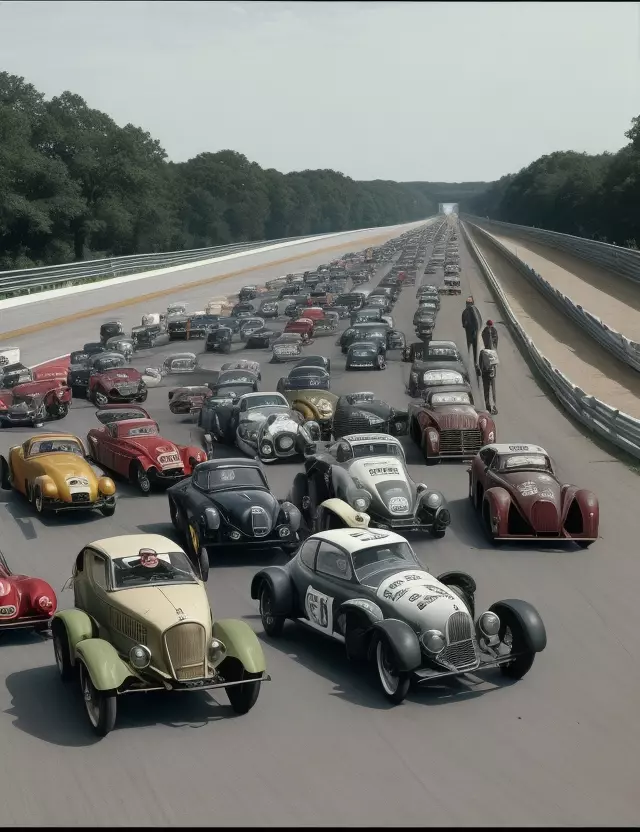The First U.S. Automobile Race: Chicago to Evanston (1895)
A Milestone in Early Automotive History

Introduction
On November 28, 1895, a pioneering event unfolded on the streets of America as the first automobile race in the United States took place, running from Chicago to Evanston, Illinois. This historic race marked a milestone in the early days of automotive history, showcasing the potential and excitement surrounding the burgeoning world of automobiles.
The Dawn of Automotive Racing
The late 19th century saw the advent of the automobile, and enthusiasts were eager to showcase the capabilities of this new mode of transportation. The idea of organizing a race from Chicago to Evanston emerged as a way to demonstrate the speed and endurance of these early automobiles.
The Race Route
The race covered a distance of approximately 54 miles, starting in downtown Chicago and heading north to Evanston. The route traversed both urban and suburban landscapes, providing a challenging course for the participating vehicles.
The Participants
A motley group of vehicles, ranging from motorized wagons to experimental automobiles, participated in the race. The diverse array of entries reflected the experimental nature of the era, with inventors and automotive pioneers eager to test their creations on the open road.
The Winner and Results
Frank Duryea, driving a vehicle built by himself and his brother Charles, emerged as the winner of the race. The Duryea Motor Wagon, equipped with a gasoline-powered engine, completed the journey in approximately 10 hours. The race showcased the potential of gasoline-powered vehicles and fueled public interest in the future of automotive transportation.
Significance and Legacy
The first U.S. automobile race from Chicago to Evanston holds historical significance as a pioneering event that laid the foundation for the future of motor racing. It captured the public's imagination, demonstrating the speed and practicality of automobiles and contributing to the growing popularity of this revolutionary mode of transportation.
Paving the Way for the Future
As we reflect on the first U.S. automobile race on November 28, 1895, we recognize its role in paving the way for the automotive industry's future. The event set the stage for the evolution of motor racing, fostering innovation and competition that would shape the landscape of automotive sports in the decades to come.
The Chicago to Evanston automobile race of 1895 stands as a testament to the pioneering spirit of early automotive enthusiasts. On this anniversary, we celebrate the courage and innovation of those who participated, acknowledging their role in shaping the trajectory of automotive history and laying the groundwork for the dynamic world of motor racing.



